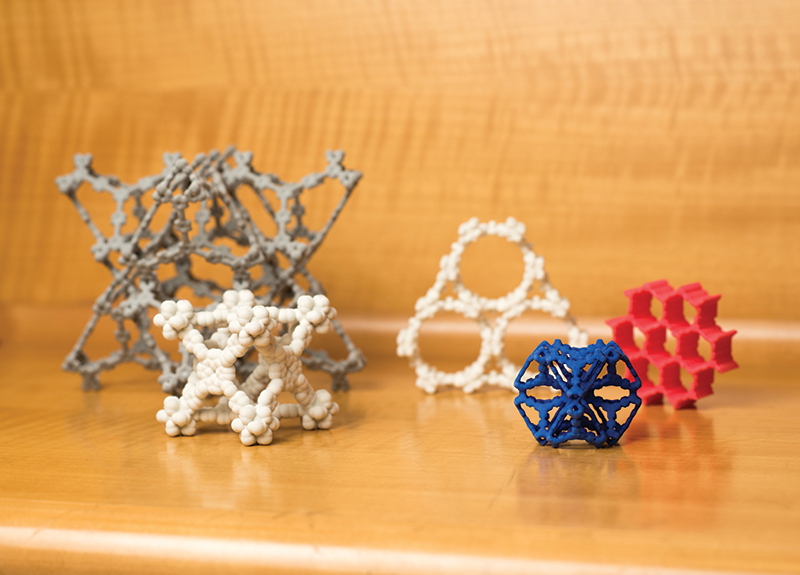Digital Innovation enables greener, leaner manufacturing solutions
by Megan Taylor Morrison
In 1981, as an employee for Graco Robotics, Al Hufstetler often visited manufacturing sites to program and service robotic systems. Inside the dark, poorly ventilated facilities, Hufstetler wore earplugs to block out the sounds of welding automation and die machines stamping sheet metal. In these buildings, machines ran around the clock, and emissions poured unchecked from smokestacks.
“We were starting to learn our lessons about factories,” says Hufstetler, now a vice president at Siemens PLM Software.
Over the past 15 years, Hufstetler has worked with Siemens to create the next generation factory through digital manufacturing. For him, this includes the use of digital data at all stages of the manufacturing process, including design, assembly, distribution, logistics, and reuse or end of life.
Because of digital manufacturing, the pace of innovation across virtually all industries has skyrocketed. Consequently, companies are seeing substantially better returns on investment, significantly less environmental impact, and drastically improved conditions for factory workers. It’s been 20 years since Hufstetler wore earplugs on a factory floor, and that’s just one small payoff from the changes happening at Siemens.
“Every manufacturer wants to figure out ways to reduce cost and improve quality and productivity,” Hufstetler says. “We’re lining up everything we do around the digital factory.”
Creating Value Beyond the Balance Sheet
Hufstetler maintains that the value of these changes goes far beyond Siemens’ bottom line. “We need to have high technology jobs stay in this country to keep up the quality of life,” he says. “Thirty years ago, everything was built here—microwaves, cars, refrigerators, stereos. It’s different today.”
According to Hufstetler, companies that embrace the new trend will create higher value jobs, bring select jobs back to the United States, and maintain the standard of living. International companies like Siemens—headquartered in Munich, Germany—that base much of their manufacturing in the United States will help keep jobs here as well. Furthermore, the changes will allow companies to respect environmental standards, meet the growing demand for sustainably made products, and keep up with a consumer market that thrives on customization.
Because of the massive economic and environmental payoffs, countries around the world are also investing billions to support digital manufacturing efforts and create the “factory of the future,” according to Caralynn Nowinski Collens, CEO of UI LABS in Chicago. Collens oversees the organization’s research and commercialization portfolio, including the Digital Manufacturing and Design Innovation Institute (DMDII). In 2015, the US government invested $70 million into the DMDII to support its efforts to keep the country at the forefront of digital manufacturing innovation.
“Digital manufacturing is the centerpiece of the fourth industrial revolution,” Collens says. “As with previous industrial revolutions, countries at the forefront will experience economic development and job growth. Those that don’t will be sidelined.”
While the United States initially built its industrial economy around manufacturing, it lost its competitive edge over the past 20 years. Collens attributes this to earlier shifts in industry that emphasized low-cost labor and dispersed supply chains. “We think of [manufacturing] as a commodity, rather than a differentiator,” she says. “We must stand out through updated manufacturing processes if we want to be competitive.”
Leading the Way with Science
At the core of these shifts are scientists working to develop solutions to manufacturing challenges. These include several visionary researchers at Northwestern.
Yonggang Huang, who is the Walter P. Murphy Professor of Civil and Environmental Engineering and Mechanical Engineering, and also a professor of materials science and engineering, is one of them. Huang worked alongside Northwestern collaborator John A. Rogers and his research team to develop a fabrication method that closes gaps in the 3D printing industry.
While 3D printing works mainly with polymers, Huang’s method applies to many more materials, including inorganic semiconductors, metals, and silicon. The team is testing the technique by creating microscale shapes that measure between a nanometer and a centimeter in length: a tiny flower, butterfly, house, car, and even a structure resembling the Sydney Opera House. Each item is manufactured in 2D and then assembled into its 3D shape, much like a pop-up book.
“Producing something in 3D can be slow, time consuming, and simply not achievable for some materials,” Huang says. “You can do anything you want in 2D, and then pop it up to 3D. It’s fast, straightforward, and very robust.”
The team uses computer simulations to ensure the resulting structure will match specifications before creating it. In other words, the manufacturing process is developed and tested virtually before it begins. This level of quality assurance is one of the big benefits of digital manufacturing.
“We don’t have to sacrifice materials or time through trial and error,” Huang explains. Once the process is tested more extensively, the pop-up model could create structures of various sizes that address challenges in modern factories.
“We’re providing a tool,” Huang says, adding that companies will be able to leverage the technology to work out a product’s kinks virtually in advance of manufacturing. Before synthesizing a tunable antenna, for instance, the team could verify that the shape would match the desired range of radio frequency. Continued research and partnership— especially among people with complementary skills—will be critical in bringing the technology to market, Huang says.
Overcoming Traditional Manufacturing Obstacles
Another Northwestern professor, Jian Cao, partners with UI Labs and companies such as Siemens, Boeing, GE, Ford, and Dow to create digital solutions to manufacturing obstacles. Cao is the Cardiss Collins Professor of Mechanical Engineering and Civil and Environmental Engineering, as well as the director of the Northwestern Initiative for Manufacturing Science and Innovation (NIMSI). She and her team develop methodologies that would make complicated manufacturing processes more suitable for distributed manufacturing. In other words, they work to make advanced technology simpler and commercially viable.
Cao’s work has major implications for the modern supply chain. Many toolings, such as those used to make automobile components, are transported to factories in other coun- tries to complete specialized aspects of manufacturing. As a result of Cao’s research, these specialized processes could be automated and products made more quickly in a single location. Not only would automobile manufacturers save money on transportation, they would also dramatically reduce the emissions from moving heavy toolings and parts long distances.
Siemens’ Hufstetler observed that with processes in one place, companies also could more easily keep up with rapidly changing market demands. “The new way of the world is customized and personalized,” he says.
“If I’m an automobile manufacturer, I may see market demand for cars one month and trucks the next month. We need flexible factories that allow manufacturers to adjust desired products quickly and easily.”
Customization is also critical in other industries, according to Cao. For example, just five years ago, when a dental patient needed a crown, the dentist took the imprint of the tooth, sent it to another location to have the replacement tooth made, and asked the patient to return days or weeks later to have it inserted. Today, that same dentist can make the new tooth in-house thanks to automated machines that create customized products based on a tooth’s unique measurements.
The key to making processes like these more accessible is understanding how materials perform and how to predict their behavior under various conditions.
“Once you have predictivity embedded in a system with digital engineering, anyone can use the technology. It’s as simple as pushing a button,” Cao says.
Her research both represents and leverages digital manufacturing. Using digital manufacturing, Cao and her team carefully model a material’s response as it is subjected to various loading means, such as lasers or magnetic fields.
As the team gains more understanding of how materials react, they can create automated processes that adjust manufacturing in real time, working out a product’s kinks during its creation and design phases, where 70 to 90 percent of total product costs are determined. This will save companies money over a product’s lifespan because well-made products require less maintenance and upkeep.
Restoring US Global Manufacturing Leadership
Once researchers like Cao and Huang prove new technologies, the next step is to disseminate them through the supply chain, Collens says. She feels optimistic that the United States is poised for resurgence as a global manufacturing leader given the talent she sees in her team, emerging scientific breakthroughs, the creativity of US-based startups that find new ways to leverage technology, and forward thinkers like Hufstetler in large corporations.
“The United States has a compelling advantage with our legacy of innovation and courageous leaders thinking about how to work with the innovation ecosystem to make a bold, digital transformation,” she says. In doing so, she believes, the United States can take the lead in digital manufacturing and enjoy the environmental and economic payoffs of the factory of the future.






